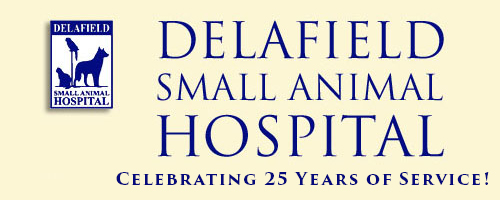Library
-
The main objectives of fracture repair are to promote rapid healing of the fracture and to get the cat using its leg as quickly as possible. In most cases, this involves rebuilding the broken bone and fixing it in that position with metallic implants. Post-operative care includes pain medications, antibiotics, adequate nutrition, exercise restriction, and physiotherapy. Most fractures can be repaired very effectively and in many cases, your cat will resume normal activity.
-
Nebulization and coupage are used in patients with a variety of lung conditions and can be performed by veterinary staff and pet owners. Nebulization may be used to deliver a variety of medications to the lungs, in cases of infection, allergic lung disease, or other lung conditions. Coupage is often recommended for patients with pneumonia or bronchitis.
-
Nutrition plays an essential role in treating and preventing urinary stones (uroliths). Since the diet can affect urine dilution, composition and pH, pet foods can be critical to the success or failure of treatment and prevention. Important factors are covered, such as the importance of water intake, diet composition, relative supersaturation (RSS) testing, and urinary diets.
-
Therapeutic laser is the application of light energy to areas of the body to stimulate healing. This light–tissue interaction is called photobiomodulation. In the past, therapeutic laser was often referred to as low-level or cold laser (as opposed to a surgical or hot laser).
-
As veterinarians become more conscious of the details and nuances of how cats experience pain, they search for more methods with which to battle both acute and chronic pain in these patients. Therapeutic massage is one example of a physical medicine technique that has found a place in the feline pain management toolbox.
-
Therapeutic ultrasound a treatment method that applies thermal, mechanical, and chemical effects to tissues to improve healing. It can be used to increase the stretch in fibrous tissues (such as tendons), which can help increase range of motion around a joint. Therapeutic ultrasound can also be used to soften and break down scar tissue that is interfering with movement. By deep heating the tissues, therapeutic ultrasound increases blood flow to the inflamed areas, which can help reduce inflammation and swelling. Therapeutic ultrasound can also decrease pain and muscle spasms, as well as speed up wound healing.
-
Your cat has allergies. These instructions have been provided by your veterinary healthcare team to help you treat your cat for her specific allergy. The instructions that relate to your cat are checked.
-
This handout summarizes the various forms of treatment for cats with asthma and includes a list of treatment instructions for home care. Treatment options include corticosteroids, bronchodilators, and inhaler use. Warning signs for cat owners to watch out for are included.
-
Damage to the tympanic membrane and middle ear infections can be very painful for cats and cause a variety of clinical signs affecting the skin and nervous system. Diagnosis often requires a thorough ear examination with testing while your cat is under sedation or anesthesia. The treatment methods and prognosis depend on the nature of your cat's condition.
-
The term chiropractic refers to manual therapy used to manipulate muscles and joints, especially the intervertebral joints in the spine. The goal of this therapy is to alleviate pain, improve mobility, and enhance overall wellness.
